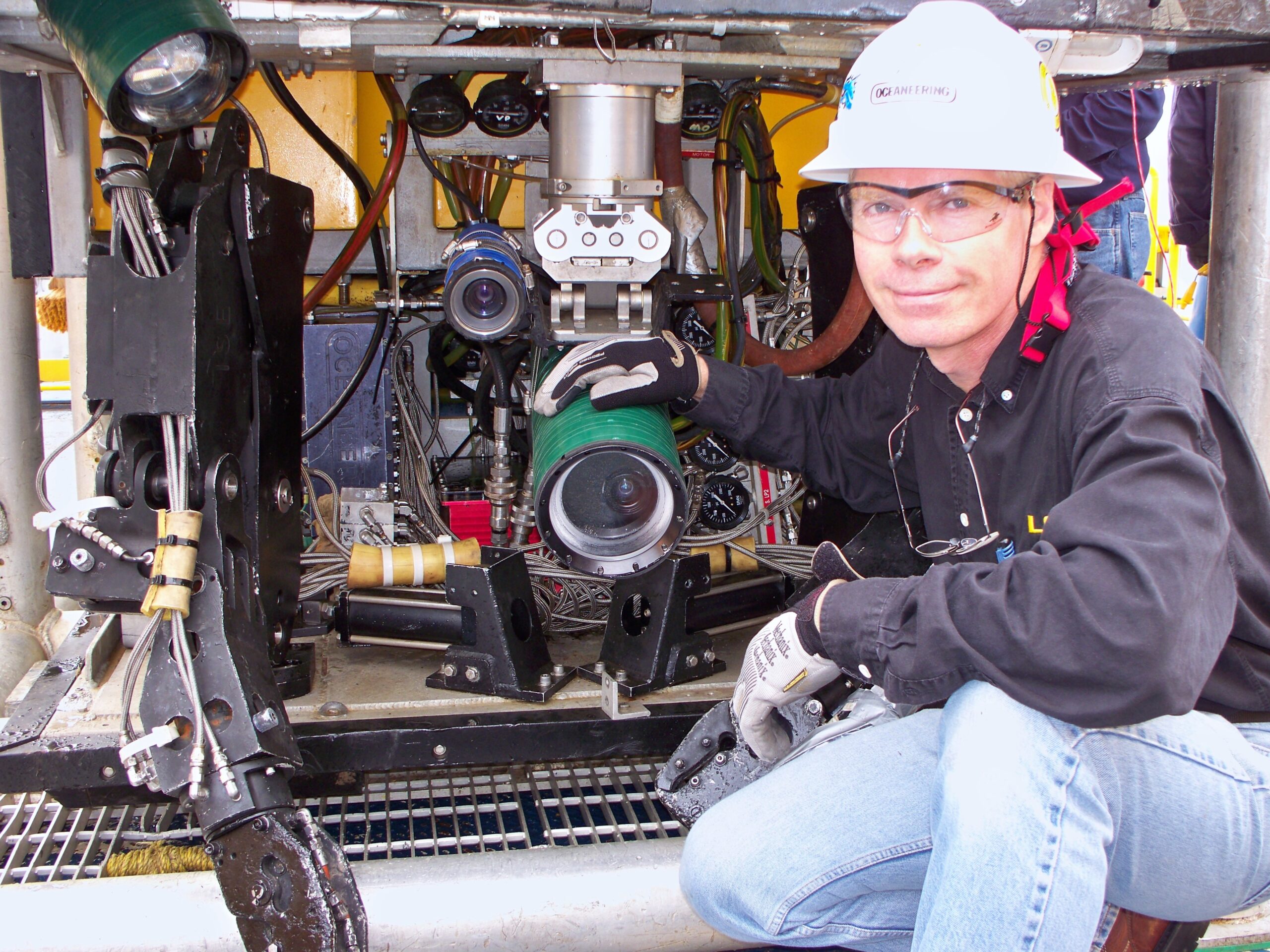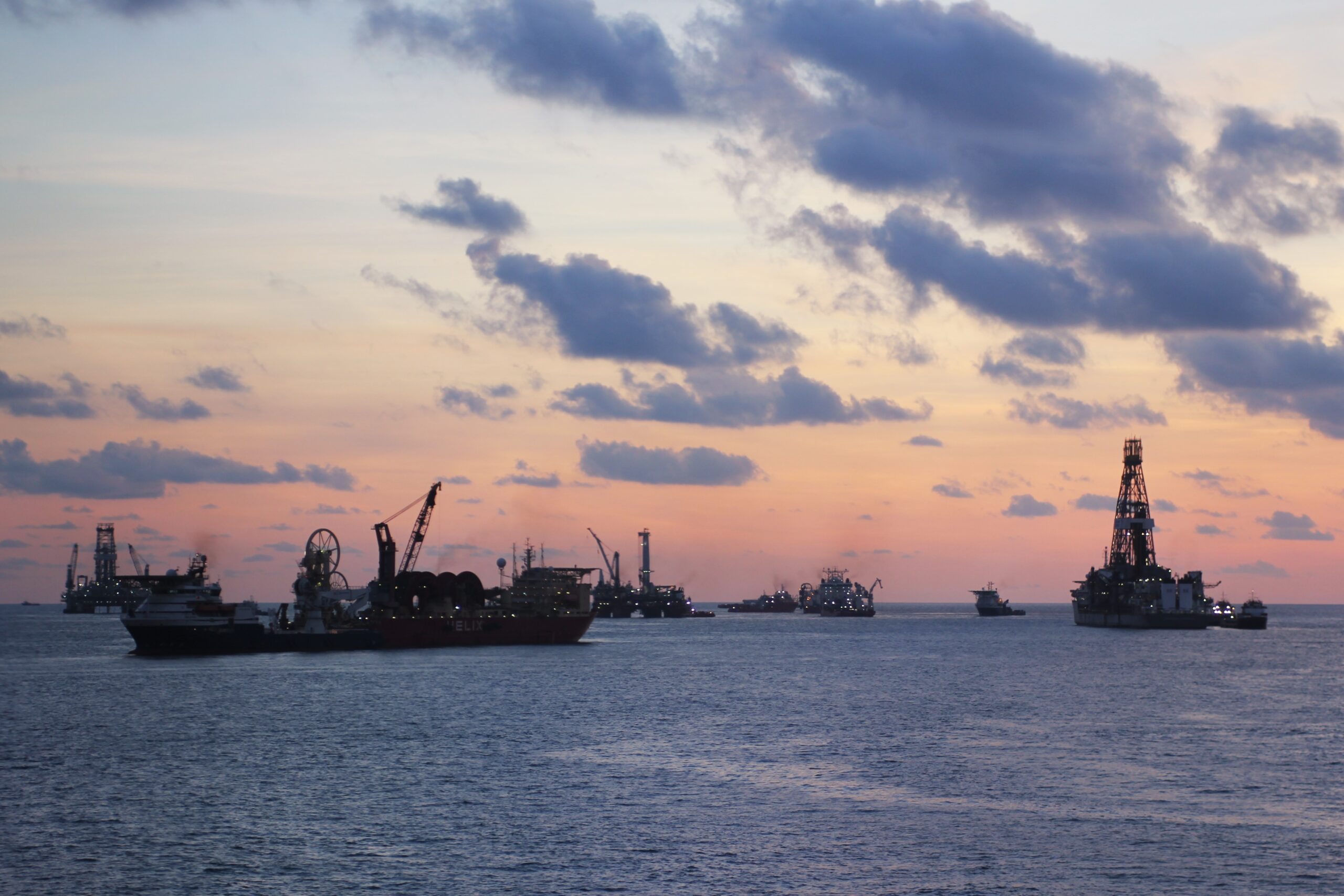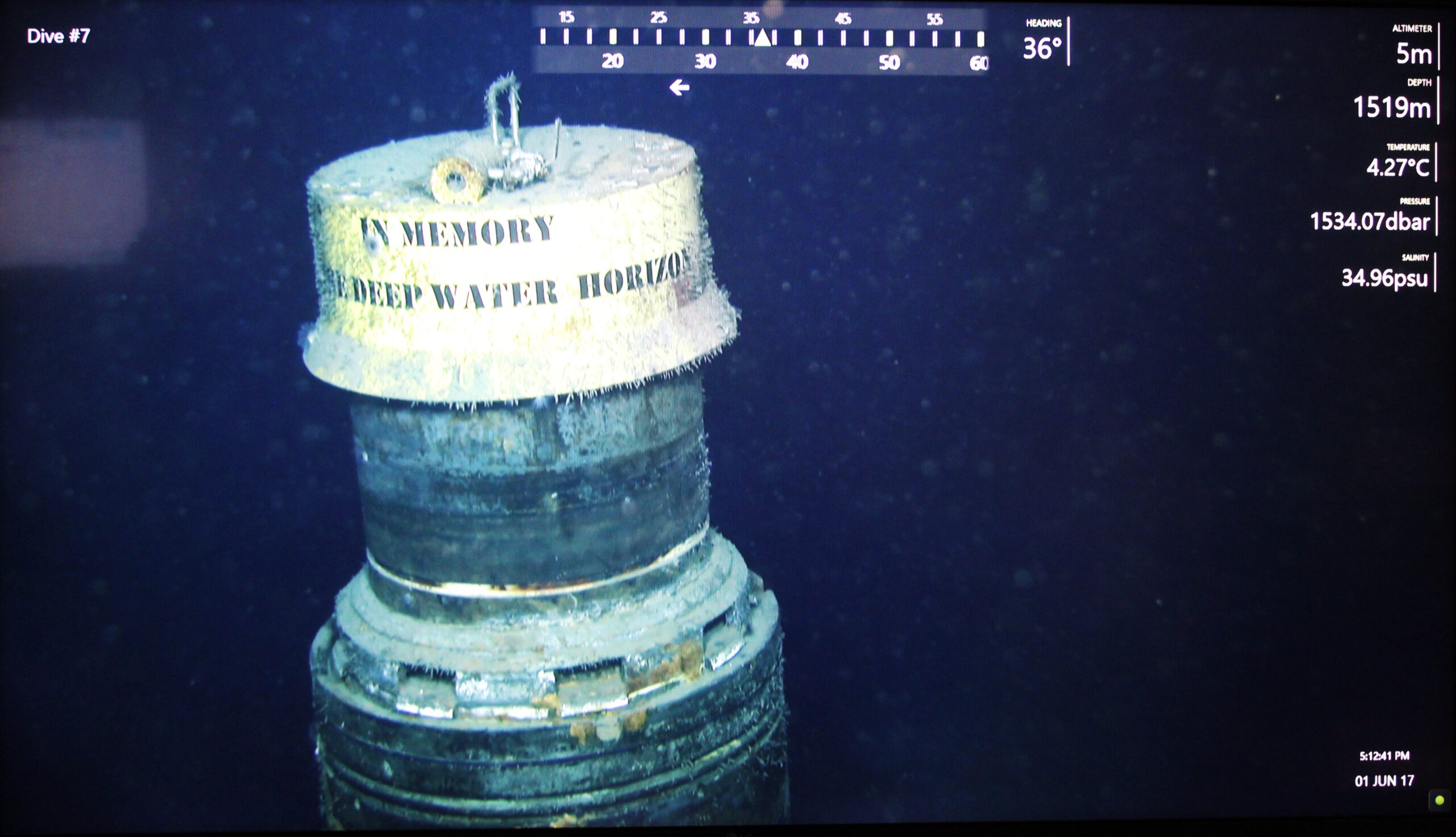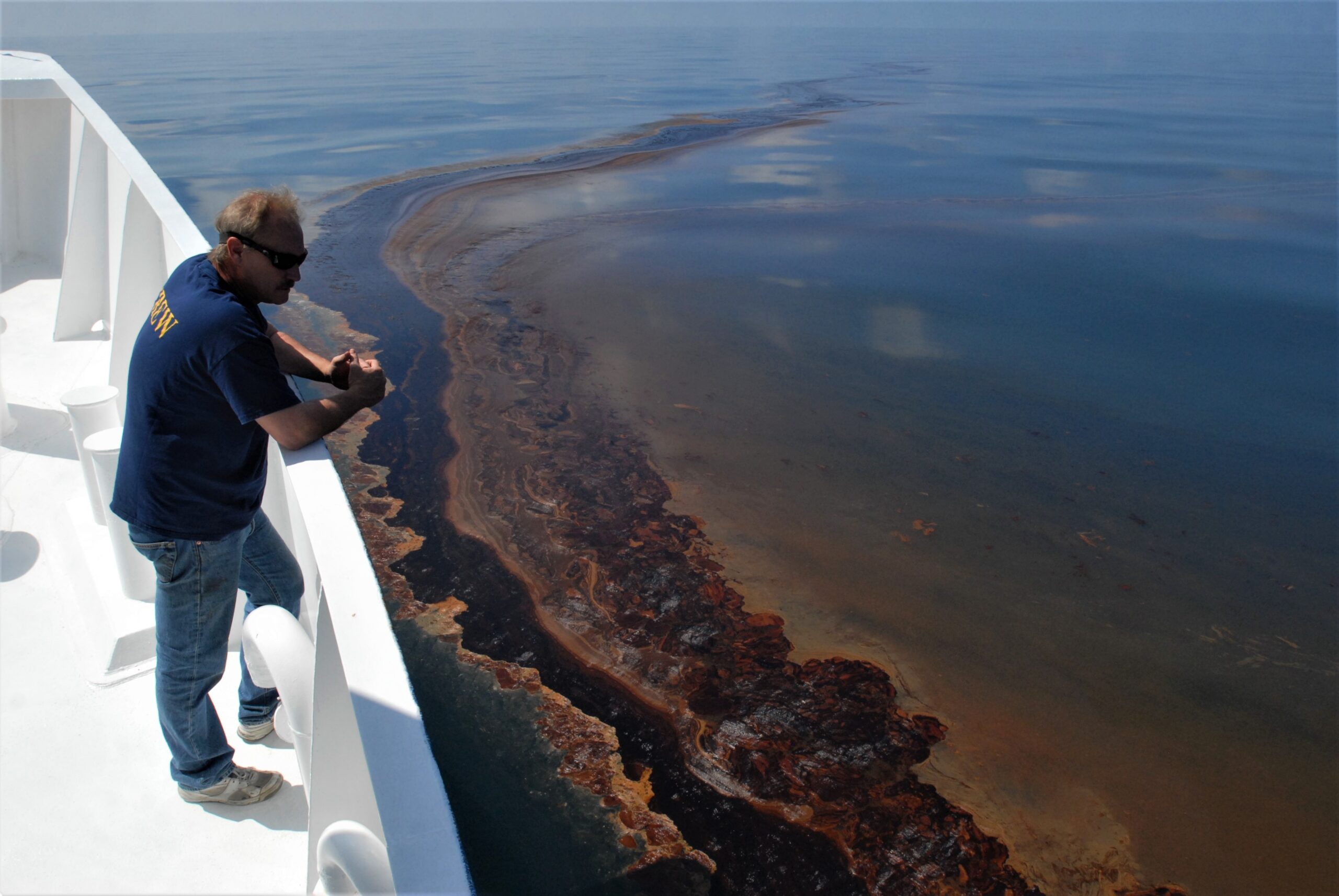Studying the Deepwater Horizon Oil Disaster
A Louisiana scientist’s perspective on the worst environmental disaster in U.S. history

Todays’ guest blog is from Virginia Schutte. She is the Science Media Officer at the Louisiana Universities Marine Consortium (LUMCON), where she experiments with new ways to make science accessible. She earned her PhD in Ecology from the University of Georgia before becoming a science communicator.
Mark Benfield was shocked to hear of the Deepwater Horizon oil rig blowout on April 20, 2010, and worried about his friends out there. He’d worked on the rig enough to know that they’d be on a vulnerable part of the structure at that time of night. He later learned that they’d safely evacuated in the rig’s lifeboats. He never expected the rig to suffer such an accident given the culture of safety there.
“There were pictures of [workers’] families in the stairways with signs saying ‘this is why I work safely’,” Benfield recalls.
In addition to standard fire drills, employees regularly practiced how to respond to a gas leak and how to operate the lifeboats. It was a level of safety training he hadn’t seen on any other rig.

Mark has been a professor at Louisiana State University since 1998. He worked with the crew of the Deepwater Horizon before the blowout through an academic-industry partnership program called the SERPENT project. In August 2010, a little over a month after the well was sealed and the leak finally stopped, BP asked Mark to take a look at the deep-sea life around the wellhead. As far as he knows, his were the first post-spill biological surveys of the seafloor around where oil had been flowing out. His team couldn’t get any closer than 500 meters (1/3 mile) from the blowout site because there were so many ships working on cleaning up and controlling the well.
Mark says that the 500-meter site was basically dead. The Remotely Operated Vehicle (ROV: an uncrewed underwater robot controlled from the surface) they used in their research passed carcasses of animals like crabs and pyrosomes lying on the ocean floor. Sites farther from the well seemed pretty normal, but it’s impossible to tell exactly what normal is for those sites since there are no data from before the spill.
Mark re-surveyed the sites farther from the wellhead in 2011, but he couldn’t get back to the 500-meter site.

And that was it for monitoring deep-sea life around where the Deepwater Horizon rig used to be. The Okeanos Explorer visited the wellhead in the years following the spill but gathered a different type of data than Mark’s team. Attention and resources shifted to the chemistry, physics, and geology of the spill. Biological research and restoration covered organisms that live in the water column or near the coast. This is Mark’s greatest frustration with the response to the spill.
After he repeated the surveys in 2011, “we just stopped looking to see what [the oil] did,” he notes. He sees echoes of this shift in how environmental restoration funds are being spent. It’s “not being put into things that relate to where the spill occurred.”
He advocates that more resources should be put toward understanding what happened in the deep sea and toward building capacity so that if there’s another spill, the Gulf community will have the resources and scientific infrastructure necessary to appropriately respond.
In May 2017, Craig McClain, the Executive Director of and an Associate Professor at the Louisiana Universities Marine Consortium (LUMCON), returned to the wellhead and repeated Mark’s surveys.

I was on the R/V Pelican during Craig’s return trip. I remember taking lots of breaks outside in the sunshine on the day that we visited the blowout site. The ship was too quiet and watching the live feeds of the ROV diving over wreckage made the air inside feel stale.
While Craig and Mark haven’t finished analyzing the data from those dives yet, one thing is clear: the 500-meter site has still not fully recovered from the impacts of the oil spill.
Today, Mark still thinks often about the Deepwater Horizon as he writes reports on the work he did around the rig. He still can’t bring himself to delete the phone numbers for the rig from his phone.
But reflecting on the oil spill includes a positive note for him too. Scientists from all over the world worked in the Gulf after the spill, collaborating with the Gulf of Mexico science community and sharing their resources.
“It was a great moment for American science to bring so much attention and expertise to bear on this problem that was so pressing”